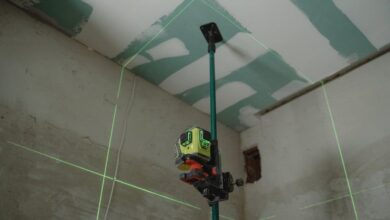How to Choose Durable Tool Belts for Professionals
Choosing the right tool belt is essential for professionals who rely on their equipment daily. A durable tool belt can make a significant difference in efficiency and comfort, allowing workers to access tools and materials quickly. With numerous options on the market, selecting the most suitable one can be overwhelming. To help you make an informed decision, we’ll explore the key factors to consider when choosing a durable tool belt tailored to your professional needs.
Material Quality
The longevity of a tool belt largely depends on the materials used in its construction. Look for belts made from high-quality leather or heavy-duty synthetic fabrics, such as nylon or polyester. Leather provides robustness and wear resistance, while synthetic materials can offer waterproof qualities and lighter weight. Whichever material you choose, ensure it has a reinforced stitching pattern, which adds to its durability and prevents fraying over time.
Belt Design and Style
Tool belts come in various designs, each serving different purposes. Some feature a standard pouch style, while others may have multiple pockets and specialized holders for specific tools. Consider your specific profession and the tools you regularly use. For instance, electricians may benefit from a belt with additional pockets for wire cutters and pliers, while carpenters might need larger compartments for hammers and saws. A well-designed belt should not only accommodate your tools but also distribute weight evenly across your hips and lower back for maximum comfort.
Comfort and Fit
A tool belt is only as good as its fit. A poorly fitting belt can lead to discomfort and hinder your performance. When selecting a tool belt, look for adjustable options that can easily accommodate your waist size. Many belts also feature padded sections that provide extra comfort, especially when carrying heavy tools. Test the belt by wearing it with the tools you plan to carry, ensuring it doesn’t pinch or dig into your sides. A comfortable fit will allow you to work efficiently without being distracted by discomfort.
Adjustable Features
The best tool belts offer customization through adjustable features. Look for belts with removable pouches, allowing you to modify the configuration based on the job at hand. Some models come with additional attachments, such as suspenders or extra pockets, which can enhance your carrying capacity. These adjustable features can help you adapt your tool belt to different tasks, making it a versatile investment for your professional toolkit.
Weight Distribution
A tool belt should support your body and make it easier to access your tools. Consider how the weight of your tools will be distributed across the belt. A well-designed tool belt distributes weight evenly, reducing strain on your back and hips. Look for belts that feature strategically placed pouches and compartments to balance the load effectively. Additionally, some belts come with built-in support systems that help distribute the weight more evenly, promoting better posture during long hours of work.
Durability and Warranty
When investing in a tool belt, consider its durability over time. Research brands that are known for quality craftsmanship and durability. Many manufacturers provide warranties that cover defects and premature wear. A warranty not only speaks to the manufacturer’s confidence in their product but also offers peace of mind for you as a buyer. Always read reviews and seek recommendations from fellow professionals to gauge how a particular brand holds up over time.
Maintenance and Care
To ensure the longevity of your tool belt, proper maintenance is crucial. Regularly clean the belt according to the material’s requirements. For leather belts, a gentle cleaner followed by conditioning can help maintain flexibility and prevent cracking. For synthetic options, a simple wipe-down with a damp cloth may suffice. By taking care of your tool belt, you can extend its life and ensure it remains a reliable part of your work gear.
Finding the Right Fit
Choosing a durable tool belt requires careful consideration of various factors, including material, design, comfort, and weight distribution. By focusing on these essential elements, you can make an informed decision that enhances your productivity and comfort on the job. Remember, a good tool belt is an investment in your work, so take the time to select one that will serve you well for years to come.







